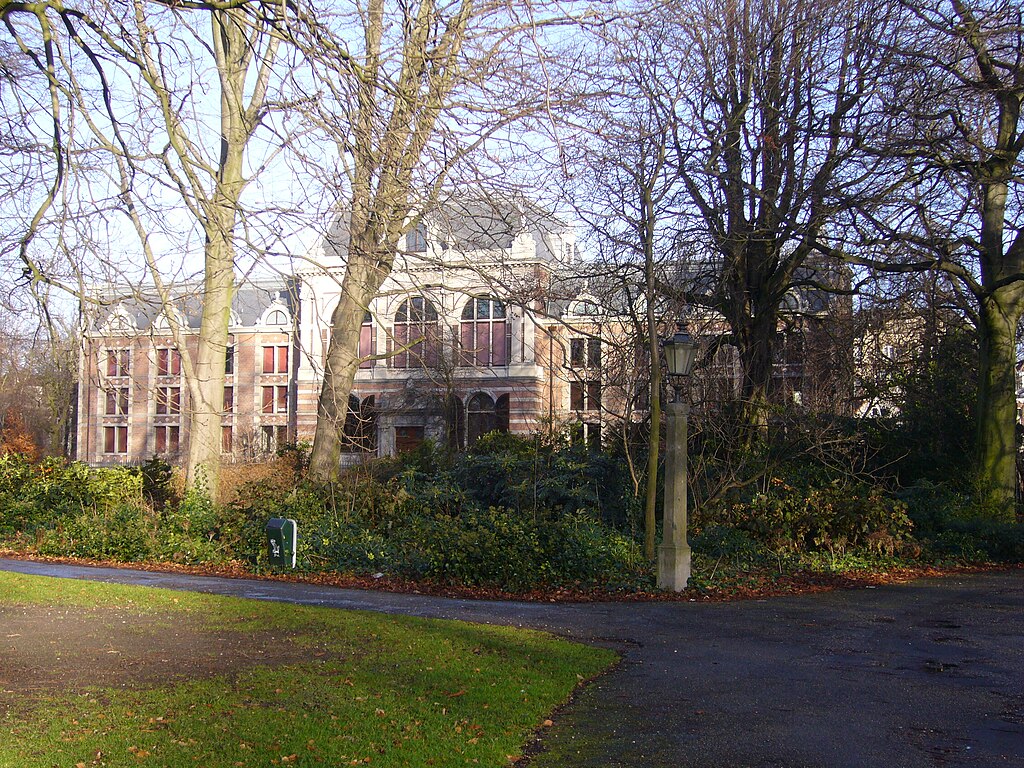by Scott Mehl © Unofficial Royalty 2015

source: Wikipedia
Noordeinde Palace
Noordeinde Palace is the working palace of the Dutch monarchy and the site of the King’s offices. Owned by the State, it is one of three palaces placed at the Sovereign’s disposal (along with the Royal Palace of Amsterdam and Huis ten Bosch). The palace is used for official and state functions, as well as housing the offices of the Royal Court.
The palace began as a farmhouse which was converted into a residence in 1533. In 1591 it was leased (and later purchased) by the States of Holland for the widow and son of Willem the Silent, in recognition of his service to the nation. The son, Frederik Hendrik, enlarged the house significantly, naming it Oude Hof, and purchased much of the surrounding land. Following his death in 1647, and his wife’s death in 1675, the house sat empty for many years and eventually passed to his grandson, King Friedrich I of Prussia.
In 1754, King Friedrich II of Prussia (Frederick the Great) sold the palace to Stadholder Willem V, and his son, who would later become King Willem I of the Netherlands, took up residence in 1792. However, three years later, he was forced to flee during the French Revolutionary Wars, and the palace became the property of the State, which it remains today.
In 1813, Willem I returned to the Netherlands. As the constitution required that a summer and winter palace be provided for the sovereign, extensive renovations were made to the Oude Hof which then became the winter residence of King Willem I in 1817. Subsequent sovereigns used the palace sporadically – Willem II didn’t use it at all, while Willem III used it as his winter residence. It was Willem III who had the Royal Stables built in the palace gardens, and it was the birthplace of the future Queen Wilhelmina in 1890.

The Royal Archives. source: Wikipedia, Photo by Pauline van Till
Queen Emma, while serving as Regent, had the Royal Archives building built within the gardens. In 1901, the newly married Queen Wilhelmina and Prince Hendrik made Noordeinde their home and continued to use it until the German invasion in 1940. Following her return to the Netherlands after the war, she continued to use the palace occasionally but spent most of her time living at Het Loo Palace.
Just before Wilhelmina’s abdication in 1948, the central part of the palace was damaged by fire. Months later, when Queen Juliana ascended to the throne, she chose to keep her residence at Soestdijk Palace which had been her home since marrying in 1936. Instead, Noordeinde was used to house offices for the royal household.
From 1952 until 1976, the north wing of the palace housed the International Institute of Social Studies. In 1969, it was announced the future Queen Beatrix would, upon her accession, use Noordeinde as her offices and after the Institute relocated in 1976, the palace underwent seven years of extensive renovations.

Queen Beatrix hosting a State Dinner for King Abdullah II and Queen Rania of Jordan. source: Dutch Royal House
In 1984, the palace was reopened as the working palace of the monarchy, housing Queen Beatrix’s offices as well as the Royal Court. It also became the site of many official and State functions, including many State dinners for visiting Heads-of-State.
King Willem-Alexander has continued the tradition, maintaining his offices at Noordeinde while living elsewhere. It is at Noordeinde where the King meets with foreign ambassadors as well as holds many official and State functions.
Each year, on Prinsjesdag (Prince’s Day, also known as Budget Day), the Sovereign travels by coach from Noordeinde Palace to open the Dutch Parliament and give the speech from the throne. Following their return to the palace, the Sovereign and members of the Royal House appear on the balcony overlooking the palace square to greet the crowds below.
Learn more about the other Dutch Royal Residences here!
This article is the intellectual property of Unofficial Royalty and is NOT TO BE COPIED, EDITED, OR POSTED IN ANY FORM ON ANOTHER WEBSITE under any circumstances. It is permissible to use a link that directs to Unofficial Royalty.
